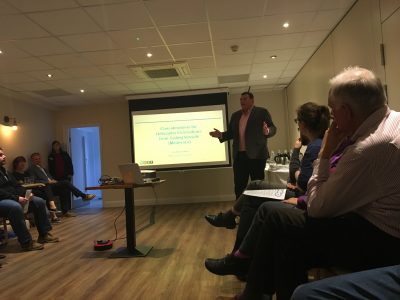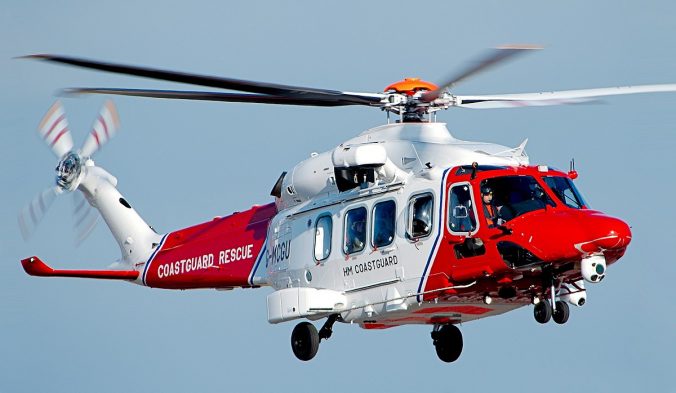The second talk at the recent Premier evening at Port Solent was from Jonathan Turner from MAST Consultancy, an ex-Navy helicopter pilot. He explained to us the procedures for the recovery of a casualty from a small vessel. This was good to know – here’s a summary of how a “High-line” recovery works from the start, so you know what to do before the crewman arrives on deck to help you.
- The local AW189 helicopters at Lee-on-Solent are LOUD. This means you won’t be able to talk when it is overhead, so get yourself organised before it comes in to hover.
- Take down sails and fasten anything than could get blown about. Get decks and cockpit as clear as possible.
- Wear rubber gloves and rubber-soled boots if possible, to minimise risk of electrical shock (see below).
- Helicopters like to hover at 40 feet for safety, but masts etc. often stick up more that 50 feet so there is a procedure called a High-line where the time spent at a greater height over the casualty is minimised.
- You will be instructed by the pilot (not the crew) over VHF, so follow instructions closely.
- It is easier for a helicopter to fly along slowly than hover so small vessels are usually given a course to steer and the helicopter will follow on the port quarter (the pilot looks out of the right front windows). On very small boats it is difficult to follow an exact course so you may be asked to remain stationary.
- The helicopter will hover over you and drop a bag on a rope. DON’T touch this until it has first touched the sea or vessel, because it will be very highly charged with static electricity and you can get a severe shock before it is earthed.
- The helicopter will then move to the side and you can pull the rope towards you, coiling the end into a bucket to avoid tangles.
- NEVER attach rope or cable to the vessel.
- Pull the rope as the winchman lets the cable down, usually they will drop a crew member down first. Use the rope to guide the cable and person/harness/load towards you. At this point the helicopter will move over the vessel.
- As soon as the cable and load has touched down the helicopter will move off to the side again. Pay the rope out which will still be attached to the cable.
- The helicopter crewman on your vessel will then take over, assess the situation and arrange for the casualty to be evacuated.

Jonathan Turner of MAST Consultancy at the Premier Marina talk October 2018

Leave a Reply
You must be logged in to post a comment.